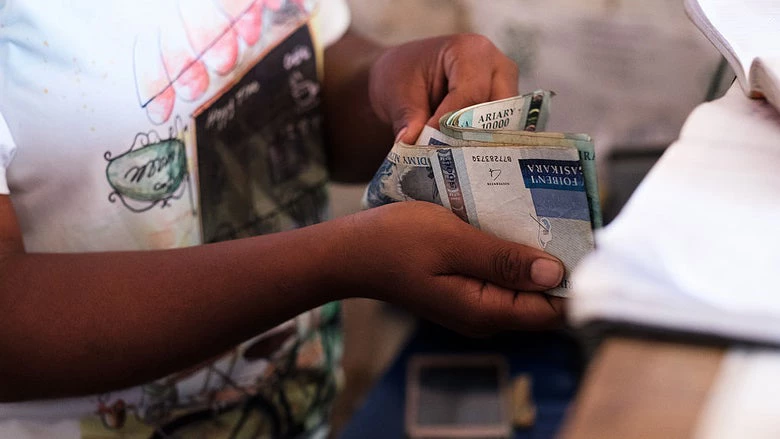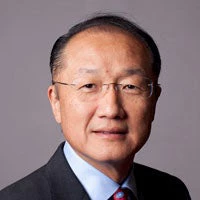
For almost a decade, the global community and national governments have made concerted efforts to expand financial inclusion —creating a financial system that works for all and opens the doors to greater stability and equitable progress.
This has been a demanding challenge. At the start of our engagement on financial access back in 2013, we said that having a real target with an end date would keep us focused and give us a benchmark against which we could measure progress.
In April we learned that we have made strong and consistent progress—a real cause for celebration. According to the Global Findex database, more than half a billion people gained a financial transaction account over the last three years, thanks to a combination of technology, private investment, policy reforms, and support from the global community. Since 2011, the share of adults with formal accounts has risen from 51 percent to 69 percent, and financial access has expanded to include an additional 1.2 billion people.
The Global Findex has helped national governments and development organizations understand how people use their accounts, where the gaps are, and how to target interventions. Its insights are central to the World Bank Group’s Universal Financial Access 2020 initiative, a global commitment to ensure that all adults have access to an account by 2020. Since we announced the initiative in 2013, the World Bank Group has added more than 30 partners across the financial sector to help reach this important goal. The Bank Group also remains on target to achieve its commitment to reach 1 billion new accountholders by 2020 through its work.
From access to use
But access isn’t enough. What matters is whether and how people use financial services. The point of financial inclusion, after all, is not just for people to possess an account but to use it to escape poverty, recover from setbacks, and improve their well-being.
The story that emerges from the latest Findex is one of digital technology’s impact on both access and usage. The example of mobile money in Kenya is well known: today, more than 70 percent of Kenyans use their mobile phones to make transactions from their mobile money accounts. In Mongolia, mobile money account ownership rose from less than 5 percent to around 20 percent. The rise of fintech innovations, especially internet-enabled payments, is the second big tech story. In China, account owners using the internet to pay bills or make purchases jumped from 24 percent to 57 percent. With the internet and e-commerce comes big data, which is making credit more accessible for small firms in a growing number of markets.
To have and have-not
The new Findex data also carries a cautionary message. Our progress so far has been uneven—women, the poor, and people out of the workforce are being left behind.
Despite overall progress, the gaps between haves and have-nots remain as wide as they were when we began to measure in 2011. Sixty-five percent of women now have an account, up from 58 percent in 2014, but the gap between women and men remains a persistent 9 percentage points in developing countries. In Bangladesh, 36 percent of women have an account compared to 65 percent of men, a difference of 29 percentage points. In Pakistan, a man is five times more likely to open an account than a woman.
To close these gaps, we need to understand what women need and want from financial services. We understand that they prioritize privacy, low cost, and security; but we need to do a better job of recognizing how women’s and men’s financial goals differ and identify products and approaches that can help eliminate the gender gap.
This customer-centric perspective brings us again to the challenge of usage. Currently, one in five accounts is dormant, with neither a deposit nor a withdrawal in the past 12 months. Inactive account rates vary across regions but are especially high in South Asia. Understanding the pain points of women, the poor, farmers, and other excluded people will be critical for designing both new services and new regulations.
The ability to digitally deposit payments directly into accounts would be a great springboard for people to open and use accounts. Digitizing government payments, for example, could improve financial inclusion among women by up to 20 percentage points in the Philippines and 28 points in Chile. Doing the same with agricultural payments could reduce the number of unbanked by up to a quarter in Mozambique, Nigeria, and Vietnam. And digitizing wages could bring in about 230 million unbanked people who are paid in cash.
Remittances are another promising arena: roughly 280 million account owners in developing economies still use cash or over-the-counter services to send or receive remittances, including 10 million people in Bangladesh and 65 million in India.
Innovation in the lead
New technologies will improve digitization and reduce the cost of providing financial services. For example, e-money regulations in Senegal, coupled with digitization policies, opened up the market to more e-money issuers and increased financial access. Findex data show that the share of unbanked adults fell to 58 percent in 2017 from 85 percent in 2014, as a result of reforms and increased competition.
Other interventions involve improving infrastructure—for example issuing digital IDs. When people can prove who they are digitally, financial institutions are much more likely to let them open an account.
We are also looking to the future to see the impact of blockchain, artificial intelligence, and other fintech innovations that have the potential to reconfigure the entire value chain for financial services.
But we need to strike a balance between unleashing fintech innovations, managing risk and stability, and protecting consumers—especially the poor. Some countries are grappling with this in interesting ways. Malaysia and Kenya are setting up regulatory sandboxes, which allow regulators to observe innovations in a controlled live environment to better understand potential risks and opportunities. Mexico and the Philippines are experimenting with RegTech—applying technology to simplify the cost and time for regulatory compliance and oversight.
Recognizing that financial inclusion can strengthen economies, reduce inequality, and help millions of people lift themselves out of poverty, many countries have established national financial inclusion strategies. These approaches bring together financial regulators, telecommunications and competition authorities, social welfare and education ministries, and the private sector to coordinate and accelerate financial inclusion efforts.
We have made a lot of progress since we started tracking global financial inclusion. Millions of people have gained the chance to improve their lives. We must continue to work together – governments, development organizations, civil society, and the private sector – to make sure that number continues to grow.



Join the Conversation